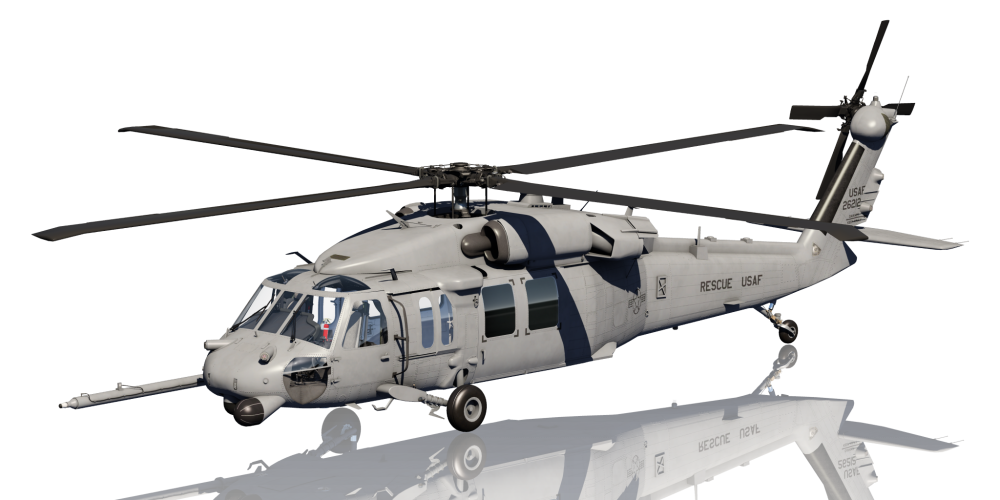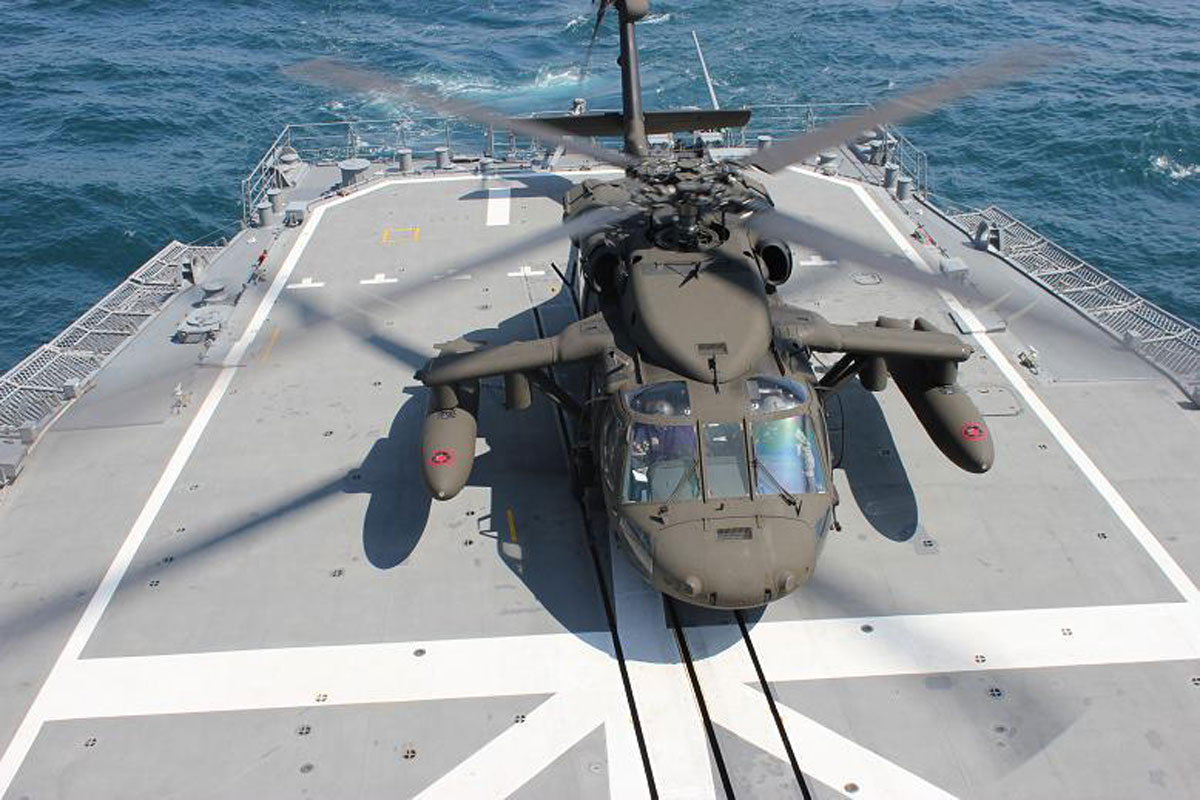What Makes the UH 60 Helicopter a Key Possession for Tactical Airlift Operations
What Makes the UH 60 Helicopter a Key Possession for Tactical Airlift Operations
Blog Article
UH-60: Innovations in Modern Helicopter Layout
The UH-60 helicopter stands as a criteria in contemporary aeronautics, showcasing significant advancements in style and innovation that accommodate the advancing needs of armed forces procedures. Its incorporation of innovative materials not just enhances performance yet also addresses essential safety and security problems. Additionally, the integration of advanced avionics has transformed functional abilities, enabling better situational awareness and decision-making efficiency. As we explore the development and essential technologies of the UH-60, it comes to be crucial to take into consideration exactly how these growths affect not just present applications yet additionally the future landscape of helicopter layout.

Advancement of the UH-60
The development of the UH-60 Black Hawk helicopter represents a substantial milestone in aerospace engineering and army air travel. Introduced in the late 1970s, the UH-60 was created by Sikorsky Airplane to meet the USA Military's need for a flexible utility helicopter qualified of executing a range of goals. Its design emphasized speed, toughness, and ability to move, setting new requirements for operational performance.
The UH-60 features a distinctive four-blade blades system, which enhances lift and security, enabling it to operate effectively in diverse environments. Its airframe is built from innovative composite materials, contributing to a reduction in weight while keeping structural stability. The helicopter's design also integrates improved aerodynamics, which enhances fuel efficiency and raises variety.
Throughout the years, the Black Hawk has undergone several upgrades to enhance its capabilities, consisting of enhanced engines, advanced trip control systems, and modular systems for simple maintenance and flexibility. The helicopter's ability to execute missions ranging from army transport to medical discharge has actually solidified its duty as a backbone of U.S. army procedures. The UH-60 Black Hawk remains an archetype of how technology in helicopter style can substantially affect military effectiveness and functional adaptability.
Advanced Avionics Systems
Developments in avionics systems have actually transformed the capabilities of modern helicopters like the UH-60 Black Hawk, boosting operational performance and situational understanding (UH 60). The integration of advanced avionics permits improved trip, navigating, and interaction management, making the UH-60 much more functional in diverse goal profiles
Among the crucial features is the sophisticated digital cabin, which utilizes multifunction displays that supply real-time data, making sure pilots have instant accessibility to critical trip info. This streamlining of information decreases pilot workload and boosts decision-making procedures during complex procedures. Furthermore, the consolidation of general practitioner and inertial navigation systems allows accurate positioning and course planning, enhancing objective implementation in difficult environments.
Furthermore, progressed avionics systems improve communication abilities via protected information web links and voice interaction systems, permitting seamless sychronisation with ground forces and various other aircraft. The integration of automatic trip control systems further contributes to enhanced stability and control, specifically in damaging weather or during low-altitude maneuvers.
Engine and Efficiency Enhancements
Engine performance in modern helicopters has actually taken a considerable leap onward, driven by developments that boost power, dependability, and performance. The UH-60 Black Hawk, for circumstances, utilizes the T700-GE-701C engine, which features a dual-channel, full-authority electronic engine control system.
In addition, the assimilation of engine health monitoring systems permits real-time diagnostics and predictive maintenance, significantly improving operational integrity. These systems not only alert staffs to potential issues prior to they end up being essential but also facilitate much more efficient upkeep scheduling, consequently decreasing downtime.

Materials and Structural Innovations
Recent developments in products and architectural style have changed modern-day helicopter construction, boosting both efficiency and longevity. The intro of innovative composite materials, such as carbon fiber reinforced polymers, has considerably decreased weight while maintaining architectural integrity. This shift not just improves gas effectiveness but additionally increases haul capability, permitting helicopters like the UH-60 to perform more diverse objectives.
Furthermore, technologies in light weight aluminum alloys and titanium components have actually contributed to improved resistance to rust and fatigue, prolonging the life expectancy of essential check it out airframe aspects. The tactical use of these materials has actually led to a decrease in maintenance demands and improved general operational readiness.

Moreover, the combination of computer-aided design (CAD) and additive manufacturing innovations has actually allowed a lot more light-weight frameworks and intricate geometries, optimizing the wind resistant performance of helicopter layouts. These developments assist in rapid prototyping and production, allowing suppliers to react quickly to progressing objective needs.
Security and Survivability Features
Security and survivability attributes in modern helicopter style have ended up being extremely important, reflecting the boosting demands for goal efficiency in tough settings. The UH-60 Black Hawk, a noteworthy instance, integrates advanced modern technologies to boost staff and passenger defense.
The helicopter likewise employs a ballistic defense system, that includes armored team seats and essential systems securing, decreasing susceptability to tiny arms fire and shrapnel. Boosted situational understanding is accomplished with innovative avionics and sensing unit modern technologies, enabling pilots to discover and prevent risks properly.
Furthermore, the assimilation of redundancy in crucial systems-- such as dual engines and numerous flight control channels-- guarantees continued procedure even if one system fails. The UH-60 is outfitted with advanced emergency flotation devices, improving article source survivability in water landings. Collectively, these functions not just improve the safety and security of personnel yet additionally enhance mission success prices in aggressive settings, showing the commitment to quality in helicopter style.
Final Thought
The UH-60 helicopter stands for a considerable advancement in modern-day air travel technology, incorporating innovative products, cutting-edge avionics, and robust safety functions. On the whole, the UH-60 offers as a standard for future growths in helicopter design, symbolizing strength and versatility in modern army operations.
The UH-60 helicopter stands as a benchmark in contemporary aviation, showcasing substantial improvements in layout and innovation that provide to the progressing needs of military procedures. As we explore the development and key developments of the UH-60, it comes to be necessary to consider just how these advancements affect not only current applications but additionally the future landscape of helicopter layout.
Presented in the late 1970s, the UH-60 was created by Sikorsky Aircraft to satisfy the United States Army's need for a flexible utility helicopter qualified of performing a variety of goals. The UH-60 Black Hawk stays a prime instance of how technology in Read Full Article helicopter layout can considerably affect military effectiveness and functional flexibility.
Overall, the UH-60 serves as a benchmark for future growths in helicopter design, embodying strength and adaptability in contemporary armed forces operations.
Report this page